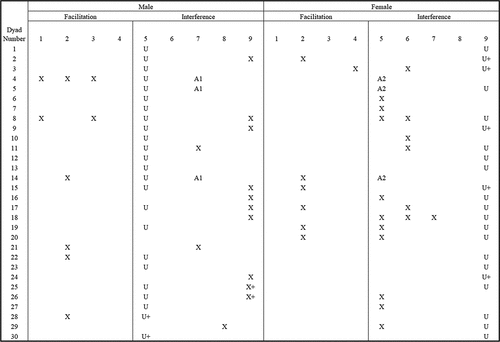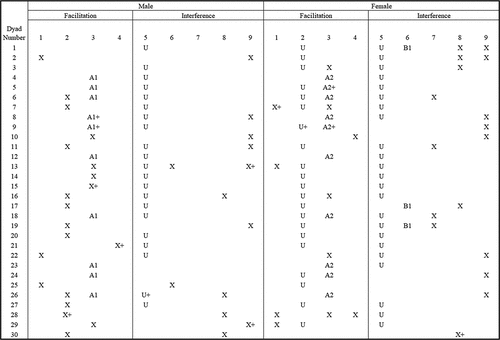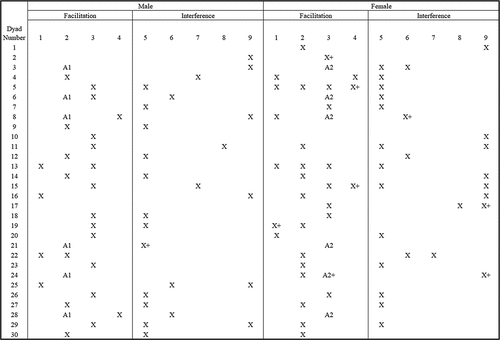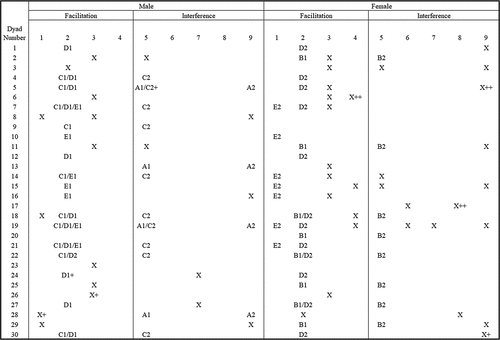Figures & data
Figure 1. Summary of Co-occurrences across waves.
Note. Each row in the table represents one of the co-occurrence patterns that emerged within each wave of the study. Column 1 is the label for the pattern in the co-occurrence matrix: letters represent co-occurrences, and numbers indicate how many themes each relationship includes. Columns 2 and 3 identify the themes that were included in the co-occurrence, with H designating husbands’ themes and W designating wives themes. Column 4 includes descriptors of the co-occurrence pattern based on Scharp’s continua.
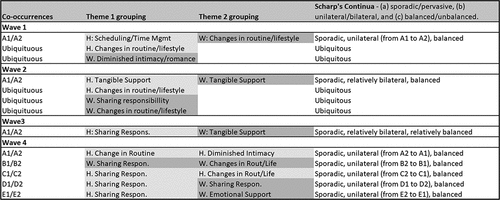
Figure 2. Wave 1 Co-occurrence matrix.
Note: For all tables, numbers at the top of a column correspond to one of the themes of facilitation (1 = emotional support, 2 = sharing responsibility, 3 = tangible support, 4 = prioritizing the relationship) or interference (5 = changes in routine and lifestyle, 6 = ineffective communication, 7 = scheduling and time management, 8 = distribution of household labor, 9 = diminished intimacy). An X represents presence of the theme and X+ indicates that the instance of the theme was forceful. Letters (e.g., A, B, and C) represent a relationship, or co-occurrence, with numbers reflecting how many themes are present in each relationship. A sample of 30 dyads are included in the matrix for parsimony.
